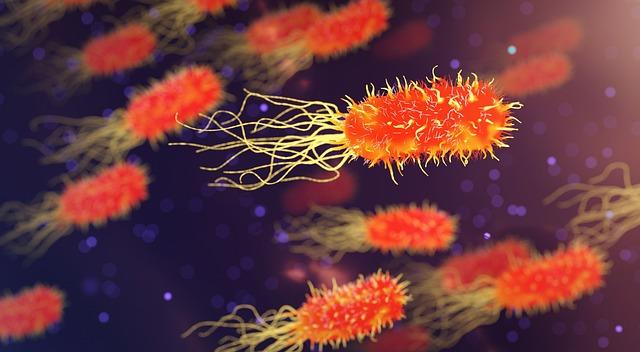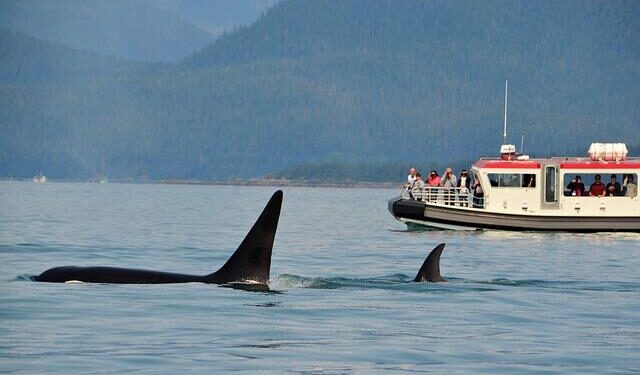In the intricate tapestry of marine ecosystems, the relationships between predator and prey are woven with threads of both survival and adaptation. Among the most formidable players in this aquatic drama are the killer whales, or orcas, known for their intelligence and complex social structures. New research, as explored in the article “Genetic Evidence of Killer Whale Predation on White Sharks in Australia” by Reeves (2025) in Ecology and Evolution, sheds light on a previously underappreciated aspect of these apex predators: their role in the predation of white sharks. This groundbreaking study offers a closer look at the ecological dynamics of Australian waters, revealing how the interactions between these titans of the ocean can shape the behavior, distribution, and population dynamics of white sharks. Through a synthesis of genetic evidence and field observations, Reeves illuminates the ways in which these interactions not only challenge our understanding of predator-prey relationships but also underscore the complexity of ecological networks in a rapidly changing world. Join us as we delve into the implications of these findings and unravel the fascinating tale of orca and shark in the depths of Australia’s seas.
Exploring the Predator-Prey Dynamics Between Killer Whales and White Sharks

The interaction between killer whales and white sharks presents a fascinating example of predator-prey dynamics in marine ecosystems. Research has revealed that killer whales (Orcinus orca) are not only apex predators but have also developed hunting strategies that specifically target white sharks (Carcharodon carcharias). Through a combination of social learning and adaptation, these intelligent mammals have been observed exploiting the vulnerabilities of sharks, leading to significant shifts in local marine populations. Genetic evidence gathered from white shark remains indicates that these predation events are not anomalies but are, in fact, a pattern increasingly recognized in various oceanic environments.
Several factors contribute to the efficacy of killer whales as predators of white sharks. Their ability to communicate complexly and coordinate during hunts allows these orcas to maximize their success rates. Key elements of their predation strategy include:
- Targeting specific species and size classes: Killer whales often focus on juvenile or vulnerable white sharks, which are easier to capture.
- Utilizing group hunting techniques: Cooperative hunting enables killer whales to encircle and isolate their prey, enhancing their overall effectiveness.
- Modified hunting techniques: These include the use of breaching and various swimming maneuvers designed to disorient sharks.
The ecological implications of this predator-prey relationship extend beyond individual interactions. As killer whales adapt their hunting behaviors, they may influence the distribution and behavior of white shark populations. Studies have shown shifts in white shark habitats in response to predator pressure, suggesting a broader impact on marine biodiversity. The ongoing research not only sheds light on the dynamics between these two formidable species but also highlights the interconnectedness of marine ecosystems where changes to one species can reverberate through the entire food web.
Genetic Analysis Unveils New Insights into Ecological Interactions

Recent genetic studies have provided groundbreaking insights into the complex predator-prey dynamics off the coast of Australia, particularly highlighting the interactions between killer whales and white sharks. By employing advanced genetic markers, researchers have traced specific predation events, revealing an unexpected degree of overlap between these two apex predators. This not only underscores the intricacies of marine ecosystems but also illuminates previously obscure food web relationships.
The analysis indicates several key findings:
- Killer whales exhibit a strong preference for juvenile white sharks, suggesting a targeted predatory strategy.
- Genetic remnants found in killer whale scat indicate instances of consumption, providing direct evidence of their role as predators.
- Variations in predation rates seem connected to seasonal shifts, highlighting the influence of environmental factors on predator behavior.
These observations shed light on how ecological interactions evolve and adapt in response to varying ecosystem pressures.
The implications of this research extend beyond mere academic curiosity. Understanding these predator-prey dynamics is crucial for effective marine conservation efforts. By recognizing the complex relationships within marine ecosystems, policymakers can develop strategies that ensure the sustainability of both species involved while maintaining biodiversity across marine habitats. The findings pave the way for future studies aimed at uncovering further ecological interactions, enhancing our knowledge of oceanic ecosystems at large.
Conservation Implications of Killer Whale Predation on Shark Populations

The recent findings regarding killer whale predation on white shark populations in Australia unveil significant conservation implications. The interplay between these apex predators not only sheds light on the intricate dynamics of marine ecosystems but raises critical questions about the sustainability of shark populations. As dominant predators, killer whales can significantly affect the abundance and distribution of shark species through their hunting behaviors. This predation leads to shifts in trophic cascades, potentially impacting the health of marine ecosystems that rely on the balance maintained by shark populations.
Furthermore, the escalation of killer whale predation may also hinder conservation efforts aimed at protecting endangered shark species. Shifts in shark demographics resulting from increased predation risk can alter reproductive patterns and population resilience, making recovery programs more complex. Conservation strategies must, therefore, account for this newfound predator-prey relationship to optimize their effectiveness. Stakeholders should consider the following strategies in their conservation efforts:
- Monitoring marine ecosystems for changes in shark behavior and population dynamics.
- Implementing adaptive management practices that respond to shifts in predation patterns.
- Enhancing public awareness about the role of killer whales in shark population dynamics to better inform conservation initiatives.
As researchers continue to uncover the genetic ties between killer whales and their prey, it becomes increasingly vital to consider these findings in the broader context of marine conservation. Efforts to protect white sharks will require a multifaceted approach that recognizes the role of all apex predators as integral components of their ecosystems. To facilitate effective conservation policies, collaboration among marine biologists, ecologists, policymakers, and local communities will be essential, ensuring that all stakeholders contribute to a holistic understanding of marine biodiversity.
Strategies for Future Research and Monitoring of Marine Apex Predators

The future of marine apex predator research hinges on innovative methodologies and collaborative efforts among scientists, conservationists, and local communities. To effectively monitor killer whales and their interactions with white sharks, a multifaceted approach is necessary. Incorporating genetic sampling techniques will provide insight into population dynamics, prey preferences, and predation patterns. This could involve:
- Deploying environmental DNA (eDNA) sampling in areas of known whale activity.
- Utilizing satellite tagging to track migration and feeding behaviors of both species.
- Conducting photo-identification to catalog individual killer whales and their movement patterns.
In addition, fostering partnerships with indigenous communities can enrich research with traditional ecological knowledge. Engaging these communities can enhance monitoring efforts through their unique understanding of local marine ecosystems and species behaviors. This collaborative dynamic can lead to the development of community-driven conservation programs aimed at protecting both killer whales and white sharks. Such initiatives might include:
- Workshops to educate communities about the significance of apex predators in marine health.
- Citizen science programs that empower locals to collect data and report sightings.
- Restoration projects for habitats critical to both species, ensuring their continued survival.
data sharing among researchers globally is paramount to understand the broader implications of killer whale predation on shark populations. A centralized database could facilitate the exchange of findings and foster collaboration on a global scale. Researchers might also consider establishing a standardized methodology for data collection and analysis, allowing for more comparable results across different regions. The implementation of these strategies could ultimately lead to a more unified, effective approach to marine predator conservation, ensuring the resilience of these critical species.
Key Takeaways
the groundbreaking research presented by Reeves in 2025 sheds new light on the complex and often enigmatic interactions within marine ecosystems. The genetic evidence of killer whale predation on white sharks in Australia not only highlights the intricate food webs at play but also underscores the adaptive strategies employed by these apex predators. As we continue to explore the depths of our oceans, studies like this remind us of the delicate balance that sustains marine life and the unforeseen consequences that can arise from changes in these dynamics. By anticipating the impact of rising environmental pressures on predator-prey relationships, we can better understand the future of our oceans and the species that call them home. As the narrative of oceanic life unfolds, the tale of the killer whale and white shark serves as a poignant reminder of nature’s intricacies and the ongoing quest for knowledge that enhances our stewardship of these vital ecosystems.










